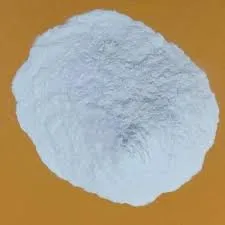
دېكابىر . 24, 2024 08:03 Back to list
Exploring Different HPMC Viscosity Grades and Their Applications in Various Industries
Understanding HPMC Viscosity Grades A Key Factor in Pharmaceutical and Industrial Applications
Hydroxypropyl methylcellulose (HPMC) is a versatile, non-ionic, cellulose ether widely used in various industries, particularly in pharmaceuticals, food, and construction. Its unique properties, such as solubility in water and thickening capabilities, make it an essential component in formulations requiring controlled viscosity. One of the crucial aspects of HPMC is its viscosity grades, which dictate its functionality and application suitability. This article aims to explore the different viscosity grades of HPMC, their significance, and their applications.
What is Viscosity Grade?
The viscosity grade of HPMC refers to the thickness or gel-like consistency of the product at a specific concentration and temperature. Viscosity is critical in determining how a substance flows and behaves when mixed with other components. The grades are typically identified using a numerical system that reflects the viscosity measured in centipoise (cP) at a concentration of 2% at 20°C. For example, an HPMC with a viscosity grade of 4000 cP is thicker than one graded at 1500 cP.
Classification of Viscosity Grades
HPMC is classified into several viscosity grades, typically ranging from low, medium to high viscosity.
1. Low Viscosity Grades (e.g., 1000-3000 cP) These grades are characterized by their ability to provide minimal thickness. They are often used in applications requiring a more fluid or less viscous consistency, such as - Pharmaceutical Formulations Used in drug formulations where a smoother texture is desired, such as oral suspensions and liquid medications. - Food Products Low viscosity grades are employed as thickeners in sauces and dressings, where a significant thickness may not be required.
hpmc viscosity grades

2. Medium Viscosity Grades (e.g., 4000-10000 cP) Medium viscosity HPMC is a versatile choice and is widely used in both the pharmaceutical and food industries. Applications include - Tablet Coatings Provides the necessary consistency for coating solutions. - Cosmetic Products Helps achieve the right thickness in creams and lotions.
3. High Viscosity Grades (e.g., 15000 cP and above) These are used where high viscosity is essential. Their applications include - Building Materials Acts as a thickening agent in cement-based products, enhancing workability and adhesion. - Pharmaceuticals In formulations such as sustained-release tablets, where the viscosity helps control drug release rates over time.
Importance of Choosing the Right Viscosity Grade
Selecting the appropriate viscosity grade of HPMC is vital for ensuring optimal performance in formulations. The wrong choice can lead to issues ranging from inadequate texture and consistency to subpar product stability. Here are a few factors to consider when selecting an HPMC viscosity grade
- End-use Application Understanding the specific requirements of the final product and how viscosity impacts its function is crucial. - Compatibility with Other Ingredients HPMC should be compatible with other components in the formulation, as interactions can affect viscosity and overall product performance. - Regulatory Considerations Especially in pharmaceutical applications, adhering to regulatory standards for viscosity and other properties is paramount.
Conclusion
HPMC viscosity grades play a pivotal role in determining the functionality and effectiveness of a wide range of products in the pharmaceutical, food, and construction industries. By understanding the properties and applications of different viscosity grades, manufacturers can optimize their formulations, ensuring better product performance and consumer satisfaction. As industries continue to evolve, the demand for tailored HPMC solutions is likely to grow, making it essential for professionals to stay informed about the latest advancements in this field.
-
The Widespread Application of Redispersible Powder in Construction and Building Materials
NewsMay.16,2025
-
The Widespread Application of Hpmc in the Detergent Industry
NewsMay.16,2025
-
The Main Applications of Hydroxyethyl Cellulose in Paints and Coatings
NewsMay.16,2025
-
Mortar Bonding Agent: the Key to Enhancing the Adhesion Between New and Old Mortar Layers and Between Mortar and Different Substrates
NewsMay.16,2025
-
HPMC: Application as a thickener and excipient
NewsMay.16,2025
-
Hec Cellulose Cellulose: Multi functional dispersants and high-efficiency thickeners
NewsMay.16,2025







